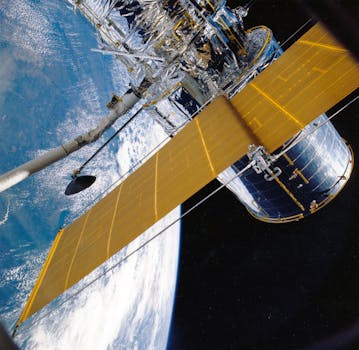From Geostationary to Low Earth Orbit: The Evolution of Satellite Telecommunications in 2023

From Geostationary to Low Earth Orbit: The Evolution of Satellite Telecommunications in 2023
Satellite telecommunications have come a long way since the launch of the first commercial communications satellite, Intelsat 1, in 1965. The industry has evolved significantly over the years, with advancements in technology and changes in consumer demand driving innovation. One of the most notable developments in recent years is the shift from geostationary to low Earth orbit (LEO) satellites. In this article, we will explore the evolution of satellite telecommunications, the benefits of LEO satellites, and the impact of this shift on the industry.
Geostationary satellites, which orbit the Earth at an altitude of approximately 36,000 kilometers, have been the backbone of the satellite telecommunications industry for decades. These satellites have a fixed position in the sky and are ideal for providing broadband services, such as television broadcasting and internet connectivity, to large areas of the Earth. However, geostationary satellites have some limitations, including high latency, limited bandwidth, and high costs.
In recent years, there has been a growing interest in LEO satellites, which orbit the Earth at an altitude of approximately 160-2,000 kilometers. LEO satellites have several advantages over geostationary satellites, including lower latency, higher bandwidth, and lower costs. LEO satellites are also more suitable for providing services that require low latency and high bandwidth, such as real-time communication, online gaming, and cloud computing.
The shift from geostationary to LEO satellites is driven by the increasing demand for high-speed, low-latency connectivity. The growing adoption of cloud computing, online gaming, and real-time communication services has created a need for faster and more reliable connectivity. LEO satellites are well-positioned to meet this demand, with their lower latency and higher bandwidth capabilities.
Several companies, including SpaceX, OneWeb, and Amazon’s Kuiper Systems, are investing heavily in LEO satellite constellations. These constellations are designed to provide global coverage, with thousands of satellites working together to provide high-speed, low-latency connectivity. The development of LEO satellite constellations is expected to have a significant impact on the satellite telecommunications industry, enabling the provision of high-speed, low-latency connectivity to remote and underserved areas.
In addition to the development of LEO satellite constellations, there have been significant advancements in satellite technology. The use of advanced materials, such as carbon fiber and aluminum, has enabled the development of lighter and more efficient satellites. The adoption of new propulsion systems, such as electric propulsion, has also improved the efficiency and maneuverability of satellites.
The evolution of satellite telecommunications has also been driven by the growing demand for internet connectivity. The number of internet users has grown significantly in recent years, with an estimated 4.9 billion people, or 63% of the global population, having access to the internet. The growing demand for internet connectivity has created a need for faster and more reliable connectivity, which LEO satellites are well-positioned to provide.
In conclusion, the satellite telecommunications industry has undergone significant evolution in recent years, with a shift from geostationary to LEO satellites. The benefits of LEO satellites, including lower latency, higher bandwidth, and lower costs, make them an attractive option for providing high-speed, low-latency connectivity. The development of LEO satellite constellations and advancements in satellite technology are expected to have a significant impact on the industry, enabling the provision of high-speed, low-latency connectivity to remote and underserved areas.
The impact of the shift from geostationary to LEO satellites will be felt across the industry, with significant implications for satellite manufacturers, launch providers, and telecommunications companies. The development of LEO satellite constellations is expected to create new opportunities for companies, including the provision of high-speed, low-latency connectivity to remote and underserved areas. However, the shift from geostationary to LEO satellites also poses significant challenges, including the need for new business models and the development of new technologies.
As the satellite telecommunications industry continues to evolve, it is likely that we will see significant advancements in satellite technology and the development of new business models. The shift from geostationary to LEO satellites is just the beginning, and it will be exciting to see how the industry develops in the coming years.